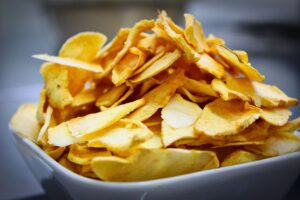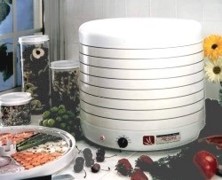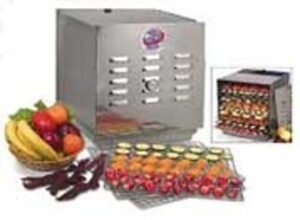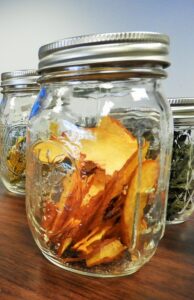 Drying fruit can be a rewarding activity. It is a simple and safe introduction to preserving food. The result is a healthy, tasty snack. Drying food, sometimes called dehydrating, is one way to make food last longer.
Drying fruit can be a rewarding activity. It is a simple and safe introduction to preserving food. The result is a healthy, tasty snack. Drying food, sometimes called dehydrating, is one way to make food last longer.
The process of dehydration can inspire creativity because dried fruit has very different flavors and textures compared to fresh fruit. Any type of fruit can be dried although some are a little easier to prepare than others. Drying bananas into chips will reduce the need to eaten them quickly.
Selecting a Food Dehydrator
When looking to dehydrate fruits there are a few key elements to manage. The first is temperature control. The second is air flow. Below are a few types of dehydration techniques that work in Colorado.
Oven Dehydration
Dehydrating can be achieved using an oven. The door must be propped open for air movement with a fan circulating air for the food items being dehydrated. This method heats up the kitchen and can be dangerous for small children and pets. Additionally, many ovens cannot be set to temperatures below 170°F.
Electric Dehydrators
 The temperature for drying fruit in an electric dehydrator is 135-140°F. In a dehydrator, the combination of low heat and a fan speeds up this movement helping water to evaporate from the surface of fruit to the surrounding air in just a few hours. This helps to protect the flavor of fruit without spoiling. Food dehydrators are much more energy efficient than ovens. It can also dry vegetables, chili peppers or herbs for use in soups or other dishes. They come in handy when apples, peaches, and plums are plentiful in the fall.
The temperature for drying fruit in an electric dehydrator is 135-140°F. In a dehydrator, the combination of low heat and a fan speeds up this movement helping water to evaporate from the surface of fruit to the surrounding air in just a few hours. This helps to protect the flavor of fruit without spoiling. Food dehydrators are much more energy efficient than ovens. It can also dry vegetables, chili peppers or herbs for use in soups or other dishes. They come in handy when apples, peaches, and plums are plentiful in the fall.
What to look for in an electric dehydrator:
Dehydrators come in two basic designs. They are either horizontal or vertical.
- Enclosed thermostat/temperature control from 85 – 145ºF.
- Look for easy to clean trays that provide air circulation, liner for fruit leather.
- Fan or blower for air circulation.
- Expandable models give more drying space.
- A timer is recommended.
- Costs vary by features.
Successful Drying
- Successful drying depends on heat, air dryness and good air circulation.

- Select fresh, fully-ripened fruits.
- Pretreat fruit pieces by dipping in an ascorbic acid, citric acid, or lemon juice.
- When dry, allow fruit to condition for 4 to 10 days before packaging for storage.
- Package dried fruits in tightly sealed containers and store in a cool, dry place.
Drying is a creative way to preserve foods and use home-grown fruit, extra produce (e.g., ripe bananas) and farmers’ market specials.

